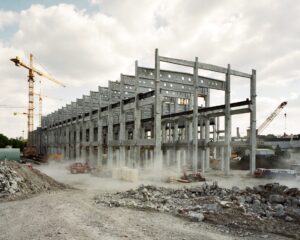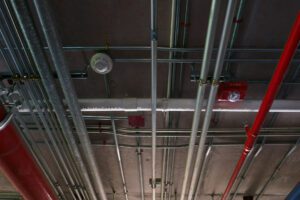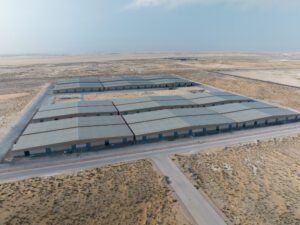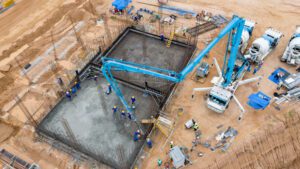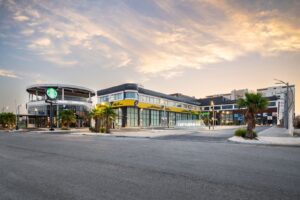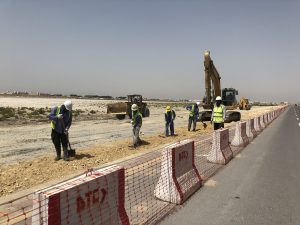Distribution Board MDB Installation Testing & Commissioning Procedure
The distribution board MDB installation testing & commissioning procedure is a critical part of any new construction project. Without proper testing and commissioning, the electrical system may not function correctly and could pose a safety hazard. In this blog post, we will walk you through the distribution board MDB installation testing & commissioning procedure step-by-step so that you can ensure your project is up to code and safe for occupancy.
Distribution Board MDB Installation Testing & Commissioning Procedure
After the distribution board MDB installation is complete, the final step is to test and commission the system. This is done to ensure that the system is working properly and that all safety features are functioning as intended.
The first step in testing and commissioning the distribution board MDB is to carry out a visual inspection. This involves checking for any damage or loose connections. Once this has been done, the next step is to test all of the electrical circuits. This includes testing for proper voltage, amperage, and continuity.
Once all of the electrical circuits have been tested and found to be working correctly, the final step is to commission the system. This involves flipping all of the breaker switches on and off to ensure that they are functioning properly. After this has been done, the system is ready for use.
Electrical Testing and Pre-commissioning of Control, Distribution and Misc
The electrical testing and commissioning of control, distribution and misc equipment is a critical part of the installation process. This helps to ensure that the equipment is correctly installed and functioning properly.
There are a number of tests that need to be carried out on the equipment, including:
1. Insulation resistance test – This test is used to check the insulation of the cables and equipment.
2. Polarity test – This test is used to check the polarity of the electrical circuit.
3. Earth continuity test – This test is used to check the earth connection of the circuit.
4. Functional tests – These tests are used to check that the equipment is functioning correctly.
Once the testing is complete, the equipment can then be commissioned into service.
Distribution Board MDB Testing & Commissioning Procedure
1. Check that the MDB is securely fastened to the wall and that all breakers are in the “off” position.
2. Visually inspect the MDB for any signs of damage or tampering.
3. Test all breakers with a breaker tester to ensure that they trip correctly.
4. Test the continuity of all wiring with a multimeter.
5. Test the ground fault circuit interrupter (GFCI) by pressing the “test” button.
6. Connect each load to its respective circuit breaker and turn on the breaker.
7. Test each circuit by turning on loads one at a time and checking for voltage drop at the outlet or fixture.
8. Once all circuits have been tested, turn off all breakers and label them accordingly.
What are the types of electrical distribution boards?
There are several types of electrical distribution boards (MDBs), each with their own set of features and benefits. The type of MDB you choose will depend on the specific needs of your project.
The most common type of MDB is the main distribution board (MDB), which is typically used in commercial and industrial applications. Main distribution boards typically have a higher voltage capacity than other types of MDBs, making them ideal for projects that require a large amount of power.
Another common type of MDB is the sub-main distribution board (SMDB). SMDBs are often used in residential applications and have a lower voltage capacity than MDBs. However, SMDBs still offer many of the same features and benefits as MDBs.
The last type of MDB is the meter distribution board (MDB). Meter distribution boards are used to distribute power to meters, such as electric meters or water meters. Meter distribution boards typically have a lower voltage capacity than other types of MDBs.
What is the difference between A Type A and Type B distribution board?
A distribution board (also known as a switchboard, panelboard, or breaker panel) is a component of an electrical system that distributes power to other parts of the electrical system. A distribution board typically contains two types of devices: circuit breakers and fuses. Circuit breakers are used to protect against electrical hazards, such as shorts circuits and overloads. Fuses are used to protect against fire hazards, such as sparks and flames.
There are two main types of distribution boards: Type A and Type B. Type A distribution boards are typically used in residential and small commercial applications. They are typically smaller in size and have fewer circuit breakers than Type B distribution boards. Type B distribution boards are typically used in large commercial and industrial applications. They are larger in size and have more circuit breakers than Type A distribution boards.
What is the difference between distribution board and switchboard?
A distribution board is a component of an electrical system that distributes power to other parts of the system. A switchboard is a device that controls the distribution of electricity within a building.
What’s the difference between A distribution board and A consumer unit?
A distribution board (also known as a panelboard, breaker panel, or electric panel) is a component of an electricity supply system that divided an electrical power feed into subsidiary circuits, while providing a protective fuse or circuit breaker for each circuit in a common enclosure.
A consumer unit (also known as a fuse box) is a device used in the UK to distribute electricity within homes and other buildings. It contains fuses to protect against overcurrent and residual current devices (RCDs) to provide additional protection against electric shocks.
Distribution Boards
As the main switchboard is the heart of an electrical system, the distribution board (DB) is its nervous system. The DB distributes power to all the final sub-circuits in a building or installation.
A distribution board may be defined as a “panel incorporating one or more fuses, switches or circuit breakers used to distribute electric power from the main supply to several circuits”.
The first thing to do when installing a new distribution board is make sure that you have the correct main switchgear for your application. This will ensure that your DB is properly protected and can handle any future loads that may be added to it.
Once you have the correct main switchgear in place, you can start installing your DB. The first step is to install the support brackets onto which the DB will be mounted. These should be secured to a solid wall or surface using appropriate fixings.
Next, connect the cables from the main switchgear to the terminal blocks on the back of the DB. Make sure that these connections are tight and secure, as loose connections can cause problems later on.
Now you can install any additional accessories that may be required, such as meter sockets or circuit breakers. Once all of these are in place, you can close up the DB and secure it with screws or bolts.
The final step is to test and commission your new distribution board. This involves turning on all of the circuit breakers and testing each individual circuit
Different Types of Electrical Distribution Board
An electrical distribution board is a component of an electricity supply system that distributes electrical power to several end-use devices. Distribution boards are typically used in homes and office buildings. There are different types of distribution boards available on the market, each with its own advantages and disadvantages. The most common types of distribution boards are:
1. Main Distribution Boards (MDBs): MDBs are the main point of connection for an electrical installation. They distribute power to the various circuits in a building. MDBs are typically located in a central location, such as a basement or utility room.
2. SubMain Distribution Boards (SMDBs): SMDBs are secondary points of distribution for an electrical installation. They distribute power to the various circuits in a building, but are not the main point of connection. SMDBs are typically located in strategic locations, such as near elevators or stairwells.
3. Final Distribution Boards (FDBs): FDBs are the last point of distribution for an electrical installation. They distribute power to the various end-use devices in a building, such as outlets and light fixtures. FDBs are typically located in convenient locations, such as near workstations or in hallways.
4. Emergency Distribution Boards (EDBs): EDBs are designed to provide emergency power to critical circuits in a building during a power outage. EDBs are typically located near exits or other safe areas in a building.
DTC company
There are a few key things to keep in mind when commissioning a distribution board (MDB). First, the company performing the installation and testing should be certified and have experience with MDB installations. Second, the MDB must be properly installed according to manufacturer’s instructions and local building codes. Finally, the MDB should be tested thoroughly to ensure that it is functioning correctly.
The first step in commissioning an MDB is to install it according to the manufacturer’s instructions and local building codes. This includes ensuring that the MDB is properly grounded and bonded, as well as installing any required circuit breakers or fuses. Once the MDB is installed, it must be tested for proper function. This includes testing the main incoming power supply, as well as all of the outgoing circuits. All circuit breakers and fuses should be tested for proper function, and all wiring should be checked for correct polarity.
Once the installation and testing are complete, the distribution board (MDB) is ready for use. It is important to have a qualified electrician perform all installation and testing procedures to ensure safe and proper operation of your distribution board.


